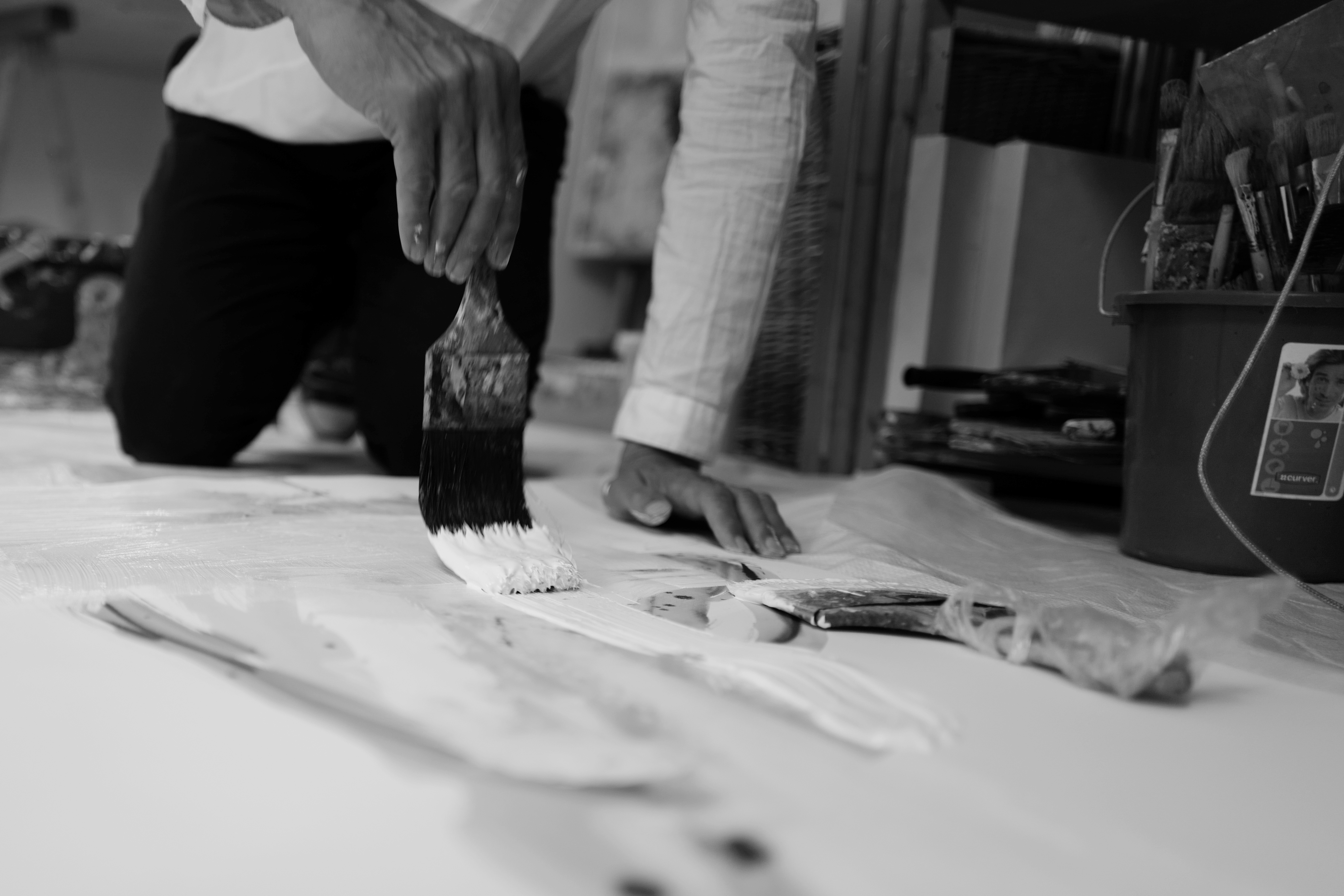
This is the prologue to an artful series (4) on liminality and organizational change
Doing good work well
Welcome to this series of 4 articles on organizational change! Those of you who are interested in theory of change may find this inquiry worth your while. As well as those who are always on the look-out for practical methods. The audience I am particularly addressing here are managers and consultants who are struggling, like me, with developing a coherent set of assumptions from which to think and act. So that we somehow know what we’re doing in the service of individuals and the communities they work in. Ask yourself: How do I know what I know? In order, ultimately, to be able to do good work well? That will be my topic, here. If it is yours, too, please join in the conversation!
Back to White: changing a genre
First, a little personal change story about how and where this inquiry started. As you see in the video, I also work as an artist. For a year or so I had wanted to change my artistic genre. Losing my interest in painting, I was drawn towards making conceptual art. One day, as I was moving all my stuff around in the studio, I suddenly realized how much work I had produced over the years. Literally hundreds of sheets of drawings and paintings, mostly nudes. What was I going to do with all these? Keep them, throw them out, give them away? No! I decided to paint them all white. One by one. I was going to change my genre by recycling my paintings into a new conceptual work of art: A thousand ‘nudes’ (size 40 cm x 60 cm to 80 x 110 cm) painted white, using approximately 200 litres of white acrylic paint, various sizes of brushes and squeegees in around 50 sessions of 4 hours. Back to White!
Liminality and the space in-between
The experience of moving slowly through this change, is the core- story of this mini-series on change. In each episode you can see me on film in my studio and read my reflections on organizational change in a written piece. A special mention: my son, Rijk, made the musical score to each of the videos. Next, I will link these experiences to the concept of ‘liminality.’ The idea of the liminal derives from anthropology (from Latin limen, threshold) and is gaining momentum these days in how we best think about global/organizational change. In this series I will be working from this basic concept to develop a theory of change. Sounds good?
The plan for the series
Every two weeks, starting next week, I will interweave the adventures in my studio with ideas from philosophy of change. In each piece (a five minutes’ read) I’ll share my reflections, fueled by the work I do as part of my executive doctorate organizational change at the Ashridge Business School. And especially for those more interested in methods, I will give examples from my consultancy practice to ground my writing in the realm of the practical.
Action research and artful knowing
It is important to add that at Ashridge I do action research. Following action research principles, I will use the experiences in my studio, as evidence for my ‘first person inquiry’ The rigor of this depends on the quality of my reflection cycles in conjunction with the critical use of ideas in literature. What I want to stress here, I think, is that I take art seriously. What I know, I mostly know artfully. It is through art that I come to understand what is it that I should do as a consultant/manager and how to do it well. This is my journey, but it could be yours, too.
Liminality and the problem areas we face
Taking my experiences in the studio and the idea of liminality as starting point, I will look at some ‘problem areas’ in our work. I hear the cynic say: ‘Change is permanent, why should I bother. A few cycles down the road we’re back to where we are now’? My answer to the cynic: ‘I agree that change is indeed continuous and everywhere. Change, however, is not about the past or the future, it is about the present and how we meet ourselves there, each time we cross boundaries and resist or embrace the un-known.’ In these four episodes I offer some questions to the answers we’re looking for.
1. Liminality, change in brackets. I will discuss the basic, processual ideas around liminal space. I will treat it as a bracketed unit of change, with its three stages of separation, in-betweenness and incorporation.
2. The separation stage. I will look at identity and rituals to overcome its resistance to change.
3. In-betweenness. Here we are subjected to not-knowing. And where we are asked to sit with the mess and find new questions that respond to the challenges we’re facing.
4. The incorporation stage. This stage is about renewal and taking responsibly for what we do and who we are. It is where our creative potential is coming to fruition.
Making sense of change: an invitation to engage
My gesture to you in this series is a plea to only stop and reflect, as you read this. And if you accompany me along this journey, to engage with me in co-inquiry and respond by pressing the like-button or even better, add a comment and open up a dialogue below! Stay tuned for the first episode: Monday next, …on ‘Liminality: change in brackets.’
In the mean time, a question to think about:
What is the ‘back-to-white’ process that comes to mind when you look at your life?
Leave a Reply